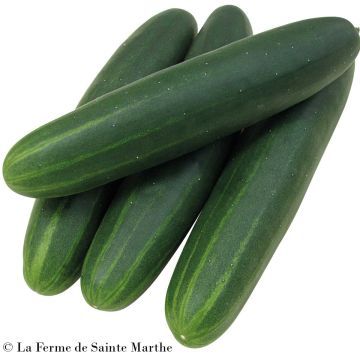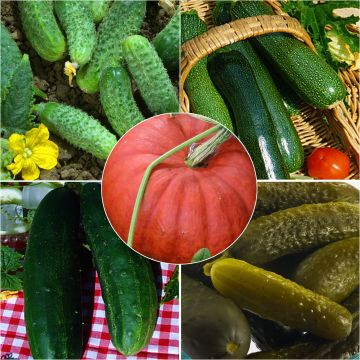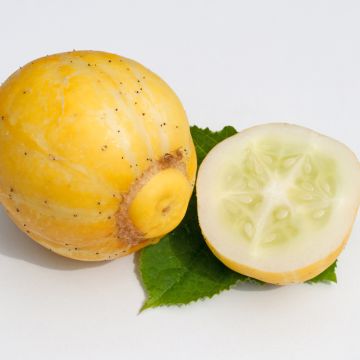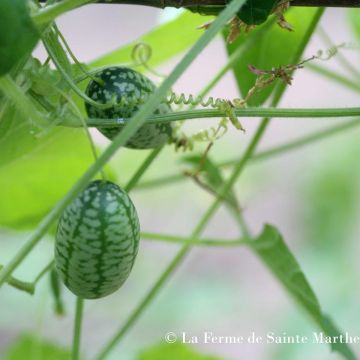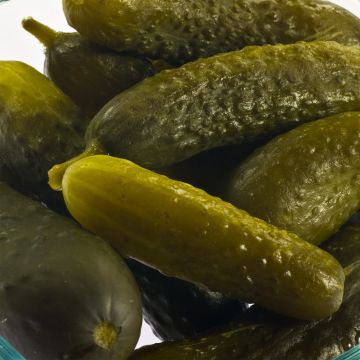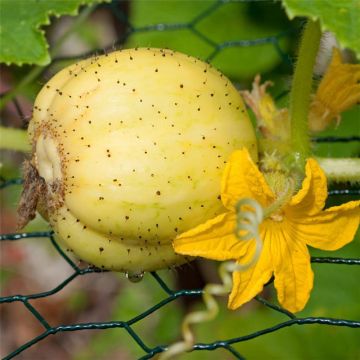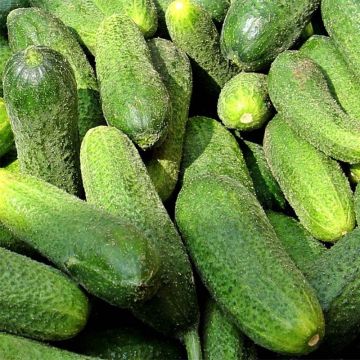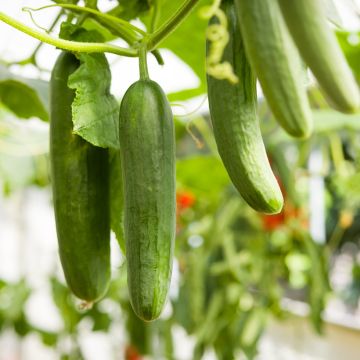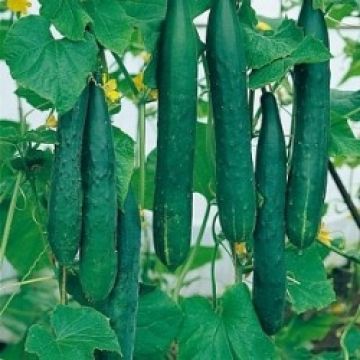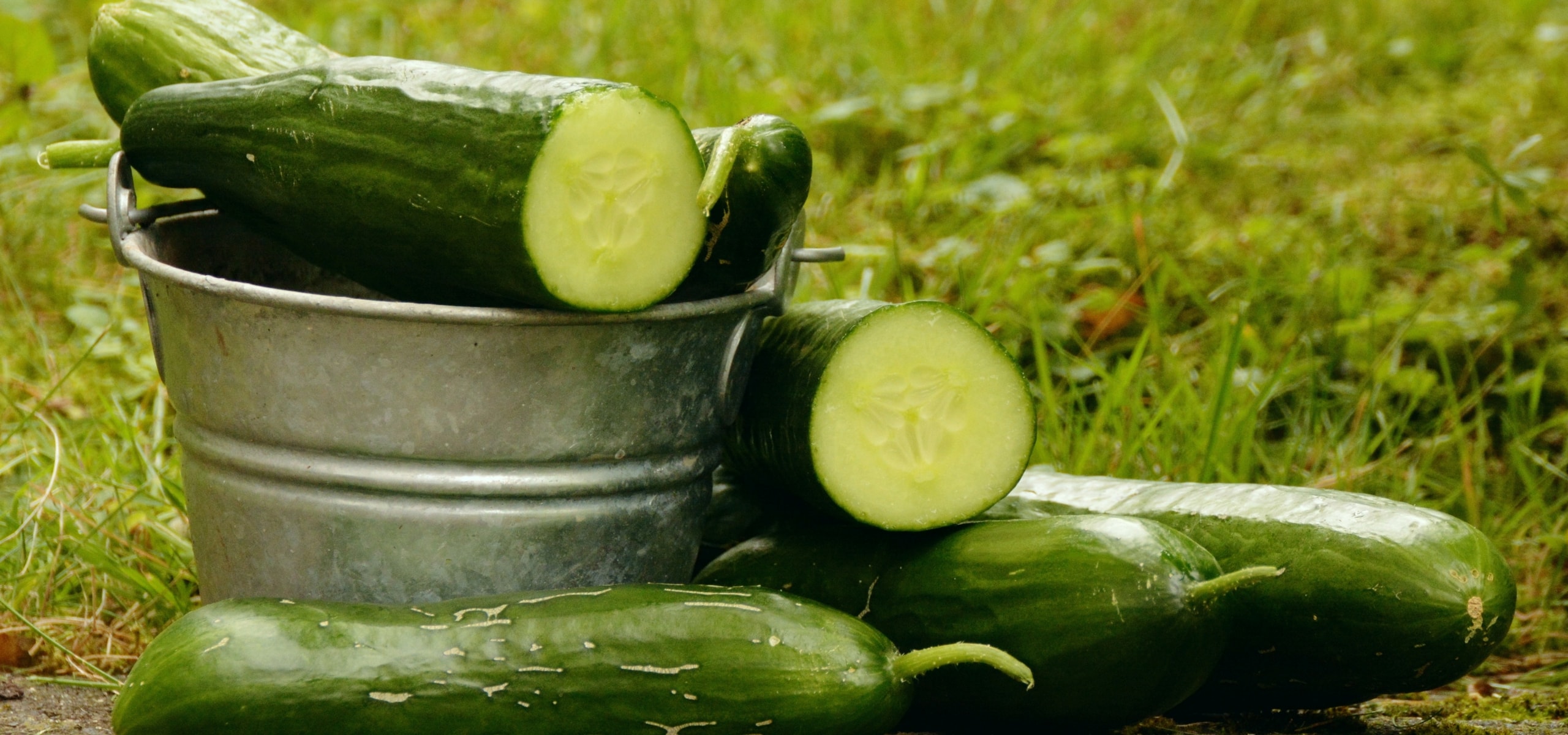
Succeeding in growing cucumbers and gherkins
in the vegetable garden
Contents
Location and soil
Gherkins and cucumbers are the same species, but gherkins are harvested prematurely. They thrive in sunlight, in light, loose, and cool soil. They appreciate well-manured land, previously enriched with an addition of compost or well-rotted manure (3 kg per m²).
Cucumbers and gherkins pair well with corn, but avoid planting them near tomatoes and potatoes.
Read also
How to make homemade gherkin pickles?Sowing and planting
Direct sowing in May is possible, but preparing or purchasing young plants for transplanting is the most commonly used method.
Sowing takes place from March to May, in a warm environment at home (minimum 16 °C). In buckets, one month before the planned planting date, place 2 or 3 seeds in a special sowing compost and water with a very fine spray. When the two true leaves appear, keep only one young plant per bucket. Maintain the young plant at a mild temperature, ensuring that the substrate remains moist but not waterlogged.
Planting occurs in the garden in May, once all risk of frost has passed. The young plants are spaced 50 to 60 cm apart in rows that are one metre apart.
Discover other Cucumber
View all →Available in 1 sizes
Available in 0 sizes
Available in 1 sizes
Available in 1 sizes
Available in 1 sizes
Available in 1 sizes
Available in 2 sizes
Available in 1 sizes
Available in 1 sizes
Trellising and pruning
Cucumbers and gherkins can be grown flat, allowing the young plant to run along the soil, or vertically, trained on a trellis frame or guided up a tipi made of stakes.
Pruning cucumbers is recommended to hasten production and achieve larger fruits. It involves:
- firstly cutting the main stem above the 3rd or 4th leaf,
- secondly cutting above the 2nd or 3rd leaf for each branch that has developed following the first pruning.
For gherkins, pruning is optional and aims to limit the spreading of the young plant while encouraging the production of new stems. It involves:
- cutting each well-developed stem (5/6 leaves) above the 2nd leaf. This operation can be repeated on the most vigorous plants.
A cultivation that requires occasional watering
Caring for cucumbers and gherkins involves regular weeding and hoeing. Watering should be frequent and done with water at room temperature. These operations can be spaced out or significantly reduced if you mulch the soil with thin, successive layers of dried grass clippings, for example.
Pests and potential diseases
In addition to the possible presence of aphids, which can be easily eliminated by spraying with water mixed with black soap, cucumbers and gherkins are rarely preyed upon by pests.
The most common disease is powdery mildew affecting Cucurbitaceae. This disease is characterised by the appearance of a white fluff on the leaves.
As a preventive measure:
- maintain planting distances and ensure regular ventilation if the crop is grown under cover,
- avoid watering the leaves,
- spray a horsetail decoction to strengthen leaf resistance.
As a curative measure:
- remove heavily affected leaves,
- spray a wettable sulphur solution every 2 weeks.
To prevent diseases, the best approach is to adhere to crop rotation in the vegetable garden by not growing cucumbers and gherkins in the same spot for 3 to 4 years. Certain varieties, such as ‘Bella F1’ or ‘Bresso F1’, as well as grafted plants, are known for their resistance.
harvest
Cucumbers and gherkins are harvested 3 to 4 months after sowing, from June to September.
For cucumbers, harvesting occurs when they have reached their final size, before their colour turns yellow.
Gherkins are picked before full ripeness. Harvesting should be done very regularly, ideally every two days during peak production, as they grow quickly.
- Subscribe!
- Contents






























